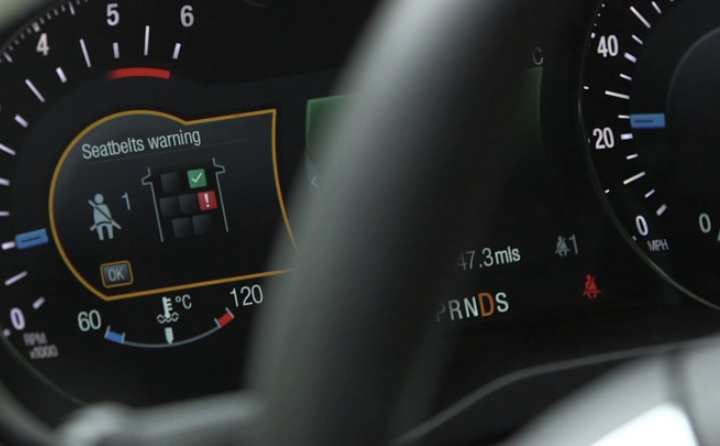
Seatbelt reminder systems will become mandatory on every new car seat – front and rear – from September 2019, as part of new regulations being adopted by the EU.
Existing EU vehicle safety rules, agreed in 2009, only require seatbelt reminder systems on the driver’s seat.
Under the new regulations, set out by the United Nations Economic Commission for Europe (UNECE), front seat systems will need to be able to detect a passenger sitting – and make an audible warning at the start of the journey if the belt is not attached.
The requirements for rear seats differ slightly in that the audible warning will only sound if a belt is unbuckled during the journey.
The new regulations have been welcomed by the European Transport Safety Council (ETSC), who describes the move as ‘a step forward for vehicle safety in Europe’.
The ETSC estimates that seatbelt use in cars in the EU is at 88% for front seats and as low as 74% for rear seats in the countries that are monitoring wearing levels.
The ETSC suggests that – across the EU – 900 deaths could have been prevented in 2012 if 99% of all occupants had been wearing a seatbelt – a rate it says ‘could be reached with seatbelt reminders’.
Elsewhere, Transport Xtra is reporting that all new electric vehicles must be fitted with a noise generator – as part of seperate, new UNECE regulations – from July 2019.
The move is designed to improve the safety of pedestrians.
If what you refer to as AVs are autonomous vehicles Peter, I’m not a fan anyway and no, I hope they are not programmed in the way you describe, although too many human drivers have self-programmed that attitude already.
Panic braking tends to be the last thing a driver does before colliding, not having been paying attention and not having been prepared for the wayward pedestrian, or anything else for that matter.
Hugh Jones
+2
Thanks Hugh. Not sure where “panic braking” came from.
Acid test is……will AV’s be programmed to sound their horn, in a “I’m coming at you and I don’t care what the Highway Code says” style, so common that it is normalised?
Peter Treadgold, London
0
Strictly speaking Peter, panic braking would be the ‘last resort’ in this scenario, not using the horn… and if you have to resort to panic braking, it usually means you’ve dropped your guard anyway. I would suggest precautionary use of the horn might be phase one of such a scenario, although it is rarely necessary in my experience and I don’t think introducing a noise generator is the answer. Remember the TV road safety ad from long ago?.. “Mind that child – they may be deaf” – that’s always been valid, long before we had electric cars and is still valid today – pedestrians can be distracted, no matter how loud an approaching vehicle might be and it’s up to the driver to consider that.
Hugh Jones
0
Hugh. If pedestrians are putting themselves in danger please consider the following: avoiding action, slow down, consider whether you were driving outside of conditions/ your or the vehicle’s safety performance, take some training or at least walk more. If you have done all of the above, using the horn may be considered as a last resort. But don’t be surprised if I shout back.
Peter Treadgold, London
0
re-the penultimate paragraph: One of the benefits of riding in electric vehicles is the quiet ride, so I hope this ‘noise generator’ does not intrude into the cabin. Anyway, if the driver wants to alert pedestrians, what’s wrong with tooting the horn?
Hugh Jones
--1